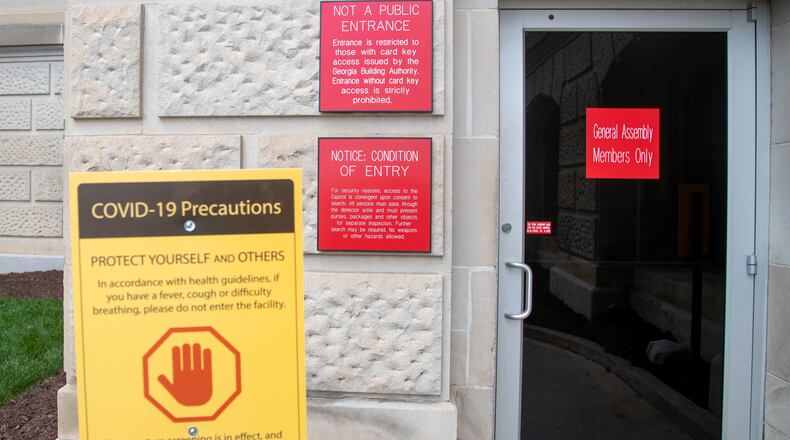Starting Thursday, Georgians will no longer be banned from holding large gatherings, restaurants will be able to seat more diners indoors and fitness centers can allow more clients to work out. Gov. Brian Kemp said easing restrictions would help the state return to normal life and businesses to survive.
Here’s how Georgia’s rules compare with those in other Southern states, along with information from the Centers for Disease Control and Prevention on the percentage of the population fully vaccinated as of April 6.
Georgia: The state has never had a mask mandate. While capacity limits ease for many businesses as of Thursday, they still must comply with hygiene requirements and mitigation measures.
Percentage of the population fully vaccinated: 13
Alabama: The state’s mask mandate ends at 5 p.m. on Friday. The state last month removed the seating limit of eight customers at a table in restaurants and bars, though tables must remain 6 feet apart unless they are separated by partitions.
Percentage fully vaccinated: 15
Tennessee: A limited state of emergency continues through April 28, but there are no state restrictions on business and no statewide mask mandate. In the state’s six most populous counties, though, restrictions set by local health departments, including mask mandates, remain in place.
Percentage fully vaccinated: 16
South Carolina: In March, the state’s limited mask mandate, which applied to government buildings and restaurants, was lifted. The governor previously lifted limits on large gatherings but recommends limiting attendance to 50% of a venue’s capacity.
Percentage fully vaccinated: 17
Mississippi: The governor’s March 31 order rolled back restrictions to allow indoor events at arenas at 75% of seating capacity, while K-12 events are limited to 50% capacity. The state’s mask mandate was lifted last year.
Percentage fully vaccinated: 17
Florida: The state has not had a mask mandate, and the governor has lifted most coronavirus-related restrictions, including occupancy restrictions on restaurants and bars. However, local governments can impose limits if it is necessary for public health.
Percentage fully vaccinated: 18
North Carolina: Masks are still mandated in any indoor space and outside, unless people can remain 6 feet away from those outside their household. Starting March 26, retailer businesses and museums were allowed to operate at 100% capacity; indoor restaurants gyms and recreational facilities at 75%; and bars, movie theaters and sports arenas at 50% capacity indoors. The limit on outdoor gatherings increases from 50 to 100.
Percentage fully vaccinated: 18
Louisiana: A statewide mask mandate is still in effect, but capacity limits on restaurants, bars, gyms and hair salons recently were lifted. Indoor gatherings are capped at 50% capacity or 500 people, whichever is less.
Percentage fully vaccinated: 18
Virginia: Masks are mandated. As of April 1, capacity limits on indoor social gatherings were increased to 50 people and outdoor gatherings to 100 people. Restaurants can offer indoor service at full capacity if patrons are separated by 6 feet.
Percentage fully vaccinated: 20
Kentucky: Masks are mandated, though the executive order expires late this month, unless the governor renews it. Indoor dining is capped at 60% of capacity, up from 50% earlier this year.
Percentage fully vaccinated: 20
Note: CDC considers a person fully vaccinated two weeks after completion of the two-dose Pfizer-BioNTech or Moderna vaccines or after the single-dose J&J/Janssen vaccine.
The Latest
Featured


